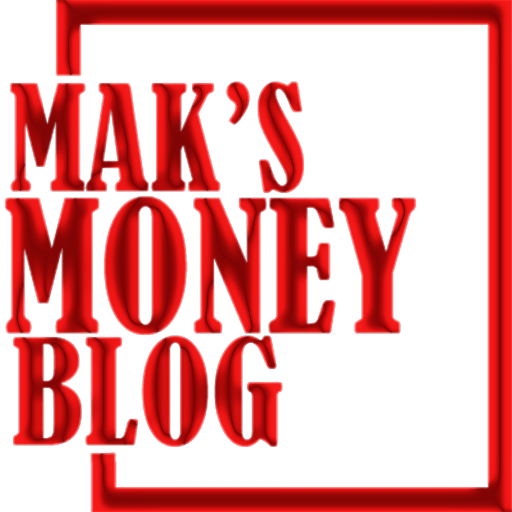
The Power of SEO: Boost Your Brand’s Visibility Now!
SEO wields the power to elevate a website’s visibility and drive targeted traffic. Mastering it can significantly impact a brand’s online presence and success.
Search Engine Optimization, or SEO, is pivotal for any business seeking online prominence and customer engagement. It’s a set of strategies and practices aimed at improving the ranking of web pages on search engine results, such as those from Google or Bing.
By optimizing website content for relevant keywords, ensuring site usability, and acquiring quality backlinks, businesses can enhance their discoverability to potential customers. This digital marketing discipline involves both on-page elements, like content quality and keyword optimization, and off-page factors like link building and social media engagement. SEO requires continuous effort and adaptation to the ever-evolving algorithms of search engines. High rankings typically lead to more traffic, which can increase leads, sales, and revenue for a business, making SEO an indispensable tool in the digital market landscape.
Related Article: The 17 Best SEO Tools of 2024 for Professional Users
You may also read: Content Marketing Strategies to Boost Your Brand Visibility – A Complete Guide

Related Article: How to Start A Blog: A Guide To Start Blogging Now
You may also read: Neuronwriter Review: A Revolutionary Tool for Writers
The Essentials Of SEO
Imagine a world where your website shines brighter than a star in the vast digital sky. SEO is the rocket fuel that can make that happen. With the right SEO tactics, your site can rise up to meet your audience. Find out what makes SEO tick and how to harness its power below.
SEO Basics And Why It Matters
Diving into SEO basics unlocks the door to online visibility. Think of SEO as a map. It guides users to your content. Without this map, your site might as well be invisible.
- Page Titles: Catchy and relevant titles that are clickable.
- Meta Descriptions: Short summaries that inspire action.
- Header Tags: Organized content that’s easy to digest.
- Image Alt Text: Descriptions that allow search engines to ‘see’ images.
- Internal Linking: Connections that bind your site together.
Keywords: The Building Blocks Of SEO
Keywords are the secret code words your audience uses when searching for you. Choosing the right keywords means the difference between being found and being overlooked.
| Keyword Type | Description | Example |
| Short-tail Keywords | General, broad terms | Shoes, Coffee, T-Shirts |
| Long-tail Keywords | Specific, niche phrases | Cheap running shoes, Organic fair-trade coffee, Vintage band T-shirts |
| Local Keywords | Include a location for local search | New York coffee shop, Miami shoe store |
Optimizing Your Website For Better Ranking
Unlocking the full potential of your website starts with smart SEO strategies. Higher rankings in search engines lead to more visitors and potential customers. Get your site to the top with these proven methods.
On-page SEO Tactics
On-page SEO boosts your site’s relevance. It makes search engines favor your content. Apply these strategies to stand out among millions.
- Title tags: Tailor them for each page.
- Meta descriptions: Write compelling ones to improve click-through rates.
- Header tags: Use them to structure content.
- Alt text for images: Describe images for search engines.
- Keywords: Include relevant terms naturally within the text.
- Internal linking: Connect different site sections.
- Content quality: Publish informative, unique, and fresh content.
- Mobile optimization: Ensure your site is mobile-friendly.
- Page loading speed: Aim for fast load times.
- User engagement: Create interactive elements for users.
Site Structure And Navigation Enhancements
Intuitive site structure and navigation are vital for user experience and SEO. A well-organized site keeps visitors happy and engaged. Follow these tips for the best results.
| Action | Impact |
| Simple URL structure | Makes pages easy to find |
| Logical site hierarchy | Guides users smoothly through content |
| Breadcrumb navigation | Shows users their path on your site |
| Clear menu labels | Helps users navigate with ease |
| Responsive design | Adjusts to any device screen size |
| Site map creation | Assists search engines in indexing your site |
Content Is King: Crafting SEO-friendly Material
High-quality, engaging content rules the digital kingdom. SEO-friendly material isn’t just about stuffing keywords into paragraphs. It’s about crafting information that appeals to readers and search engines alike. Let’s dive into the essentials of creating content that resonates and ranks.
Blogging And SEO: A Symbiotic Relationship
Blogging isn’t just about sharing thoughts. It’s a powerful SEO tool. Regular, valuable blog posts can drive traffic, increase engagement, and boost search rankings. Here’s how:
- Keywords: Use relevant terms that users search for.
- Consistency: Post regularly to keep content fresh.
- Engagement: Encourage comments and sharing to improve visibility.
Multimedia Content And Its Impact On SEO
Multimedia elements like images, videos, and infographics can turn a good post into a great one. They enhance user experience and contribute to SEO through:
- Visual Appeal: Catching the reader’s eye.
- Alternate Text: Describing images with keywords.
- Engagement Time: Keeping visitors on site longer.
Off-page SEO Strategies
Off-page SEO goes beyond your site. It is about enhancing your online presence. Let’s explore key strategies.
The Role Of Backlinks In Seo
Backlinks act as votes of confidence. They tell search engines your content matters. An effective backlink strategy boosts your site’s authority. This can lead to better rankings. Aim for high-quality, relevant links over a large quantity of poor ones.
- Guest blogging: Share expertise on others’ blogs.
- Broken link building: Replace dead links with your own.
- Skyscraper technique: Improve on top-performing content.
Social Media And SEO Synergy
Social media does not directly impact rankings. But, it can certainly amplify your visibility. A strong social presence leads to more shares and traffic. These are good signals to search engines. Make sure to:
- Keep profiles active with regular posts.
- Engage with followers to increase shares.
- Link back to your website when relevant.
| Platform | Type of Content | Frequency |
| Posts, Images, Videos | Daily | |
| Tweets, Threads | Multiple times a day | |
| Stories, Posts, Reels | Daily |
Measuring SEO Success
Understanding the impact of SEO efforts is crucial for continuous improvement. Effective measurement reveals what works and what needs adjustment. The right metrics serve as a compass, guiding your SEO strategy toward success. Let’s dive into the key metrics you should be tracking.
Key Seo Metrics To Track
- Organic Traffic: Total visitors coming from search engines.
- Bounce Rate: Percentage of visitors who leave without viewing another page.
- Conversion Rate: Percentage of visitors who complete a desired action.
- Keyword Rankings: Positions your pages hold for specific keywords.
- Page Load Time: Speed with which your pages become fully interactive.
- Top Exit Pages: Pages where visitors most often leave your site.
- Click-Through Rate (CTR): Ratio of users who click on a specific link to the number of total users who view a page, email, or ad.
Adjusting Your Strategy Based On Analytics
Analytics illuminate the path to improved SEO. Frequent analysis exposes trends and insights. These findings empower strategy refinements for better results. Below are steps to optimize your SEO plan.
- Analyze Organic Traffic: Look for patterns and adjust content to boost visits.
- Check Bounce Rates: Identify pages with high bounce rates and enhance user engagement.
- Evaluate Conversions: Focus on pages with low conversions to improve calls to action and user experience.
- Monitor Keyword Rankings: Watch for ranking changes to inform content updates and keyword targeting.
- Improve Page Load Time: Optimize images and utilize caching to speed up load times.
- Assess Top Exit Pages: Redesign exit pages to retain visitors and encourage further interaction.
- Optimize CTR: Use compelling meta titles and descriptions to improve click-through rates.
By tracking these SEO metrics and responding to the insights they provide, you can transform your strategy into a dynamic tool for web success. Remember, flexibility paired with data-driven decisions is the hallmark of a robust SEO approach.
Related Article: Traffic Generation Strategies: Boost Your Site’s Visibility

Related Article: The Benefits of Blogging That Make Your Blogging Career
Frequently Asked Questions Of The Power Of SEO
Why Is SEO Important?
SEO boosts website visibility and search ranking, enhancing user traffic and potential revenue. It improves user experience, increasing site credibility and engagement.
What Are The Benefits Of Doing SEO?
SEO boosts website visibility, leading to increased traffic. It enhances user experience, improving conversion rates. Cost-effective marketing, it targets quality leads. SEO builds brand credibility and influence. It encourages higher search engine rankings, fostering trust with users.
What Is The Main Purpose Of SEO?
The main purpose of SEO is to improve a website’s visibility in search engine rankings, aiming to increase organic traffic and enhance user engagement.
How Impactful Is SEO?
SEO is highly impactful for online visibility. It boosts website traffic, enhances user engagement, and increases brand awareness. Effective SEO leads to higher search engine rankings, driving organic growth.
To know about the Power of SEO masterclass>>
Conclusion
Embracing SEO unlocks digital potential and elevates content visibility. It’s essential in crafting an online presence that resonates and endures. Optimizing for search engines isn’t just technical; it’s a strategic approach to engaging your audience effectively. Let SEO be the guiding force to amplify your voice in the vast online arena.
Remember, mastering SEO is mastering the art of being found.
Related Article: Flipping Websites: A Basic Guide To Know








5 Comments
Pingback:
Pingback:
Maliha
Informative and useful useful content. Carry on.
maksmoneyblog
Thanks. Stay connected.
Pingback: